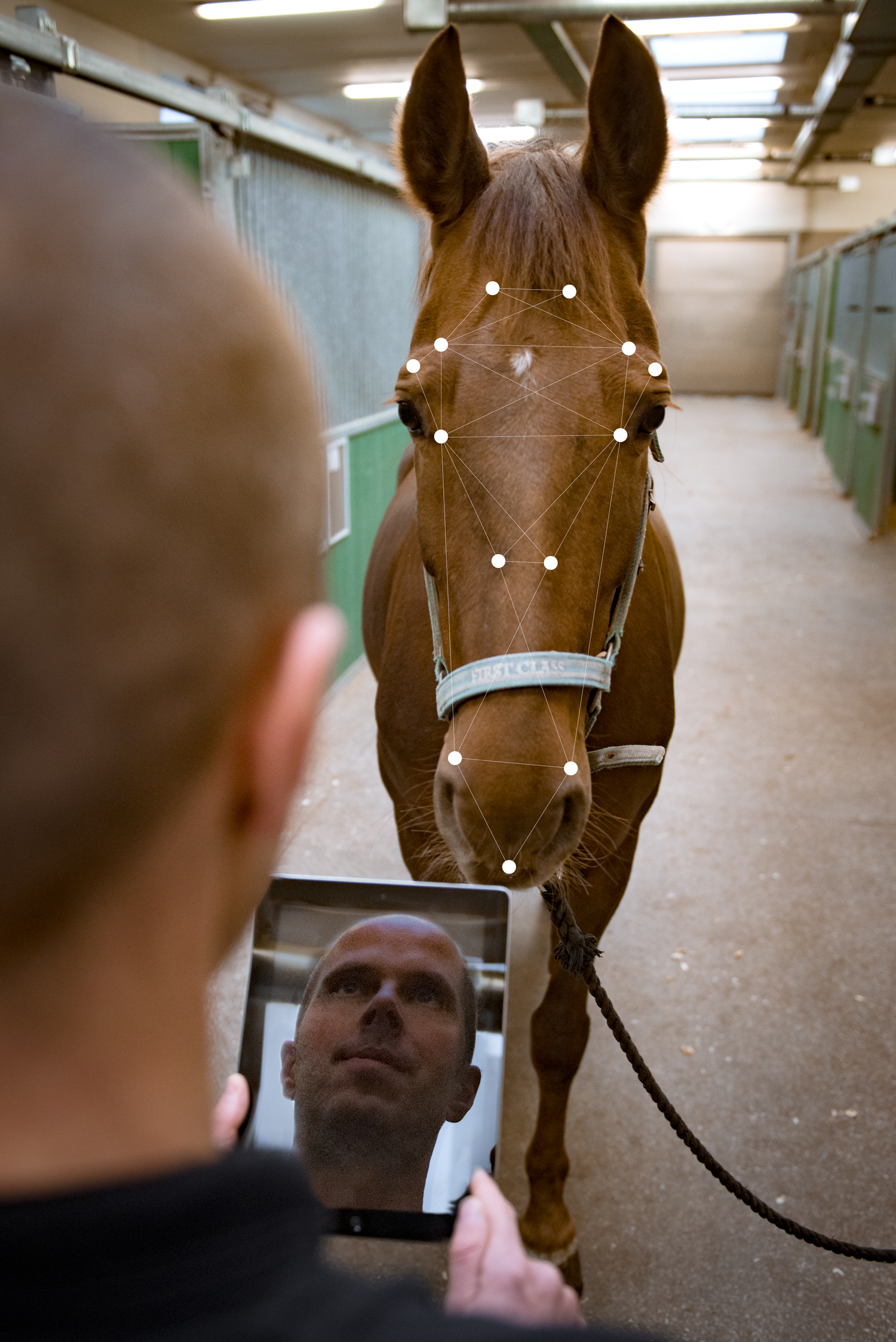Equid emotions on a smartphone
The problem
When administering pain relief to animals, veterinarians and owners are often confronted with the fact that the animal cannot express how much pain it is feeling, and where the pain is located. When humans are in pain, many hospitals use a Visual Analogue Score (VAS), in which the patient can indicate how much pain he or she is feeling, on a scale of 0 to 10. Unfortunately, this only works if the patient can communicate how much pain he or she is in. This is often a problem with young children or elderly dementia patients, for example.
Over the years, considerable research has been conducted into objective and reliable methods to measure pain in animals. Various studies have been conducted on horses, resulting in a wide range of systems with the same goal: ‘how can I create a measurement system that reliably determines how much pain the horse is suffering?’
What we want to do
Over the past few years, several studies have shown that composite pain scales can be used to make pain measurable. These include behavioural expressions, such as lying down, rolling and scratching, physiological variables such as the heart- and respiration rates, and interactive variables such as touching the sore area. These systems work well for colic and orthopaedic pain. Considerable research has also been conducted on the horse’s facial expressions and pain. Some of these have shown that certain types of pain, such as postoperative pain, acute colic pain and pain in the eyes or teeth, can be determined based on facial expressions. This method also seems to be applicable to donkeys as well.
By supporting further research into recognising pain in horses and donkeys, we may learn more about how to objectively measure specific types of pain. This is because new measurement instruments must be studied and tested for reliability for each type of pain. Additional research is also needed for donkeys, which are even less adept at communicating pain than horses, in order to realise usable instruments for measuring pain.
The end result
Our goal is to eventually produce methods for measuring pain that can be used by everyone, not just veterinarians and scientists. This is because we want animal owners to be able to estimate the pain that their own animals may be suffering. Doing so would be a major leap forward in animal welfare! The goal is to apply the scientific findings in a mobile app, in order to give veterinarians and owners the tools they need to diagnose pain objectively and reliably in horses and donkeys!
What do we need?
In order to develop an app that will recognise pain in horses and donkeys, we need € 30,000. Any money we raise above that amount, we'll use to carry out more research on digital pain recognition in horses and donkeys.
Who I am
I am Dr. Thijs van Loon, and I am a University Lecturer, researcher and veterinarian at Utrecht University’s Faculty of Veterinary Medicine.
What I do
I work at the faculty’s Department of Equine Health, where I am specialised in veterinary anaesthesia. My research mainly focuses on how horses and donkeys express their pain. Their facial expressions speak for themselves!
If you would like to know more about me, click here.








































